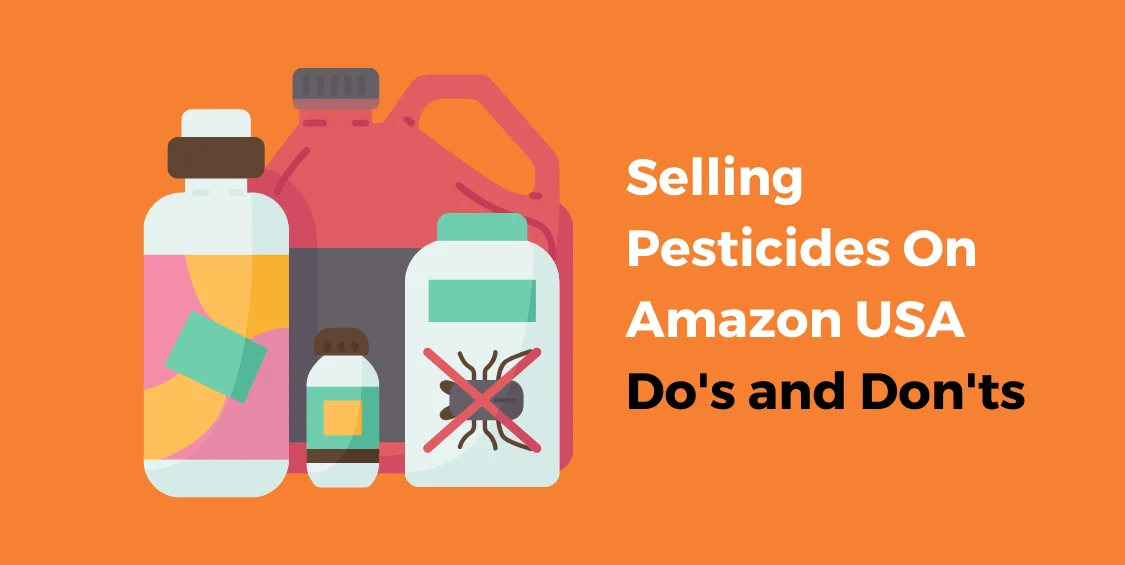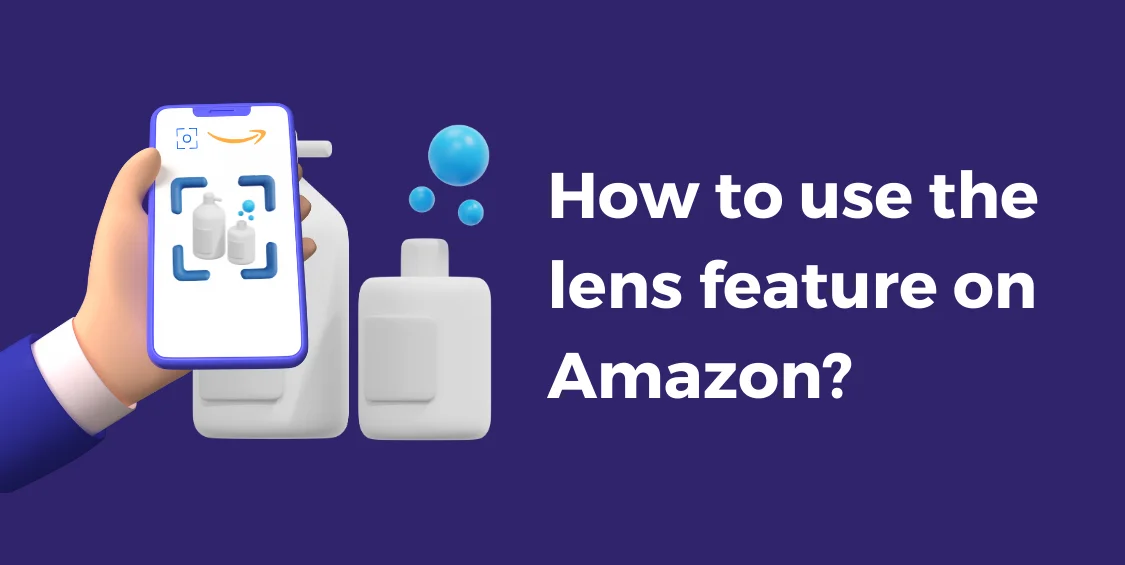Recently, many clients complained about their listings getting flagged by Amazon even though they’re not pesticides. This is something faced by many Amazon sellers, so keep reading to learn why this happens and how to avoid getting your listing removed by Amazon.
According to a press release, February 9, 2021, from the EPA’s Seattle office, Amazon.com has been issued a “stop sale” order to prevent the sale of unregistered pesticides and pesticide devices that make illegal and misleading claims, such as several products that claimed to protect against viruses.
More than 30 prohibited items were already included in an EPA directive issued on June 6, 2020, adding another 70.
This led to Amazon imposing heavy regulations and strict policies to control the trading of pesticides on its platforms. And now, the eCommerce giant is set to take its subsequent serious action to restrict sales of pesticides or listings claiming to be antimicrobial, disinfectant, or repellant in states where they are not registered, effective October 2, 2023.
Understanding Amazon’s Policies on Pesticides:
Which listings qualify as pesticides?
“Pests” can refer to various organisms, including insects, fungi, bacteria, mites, mildew, and even animals. Suppose a product directly or indirectly claims it can be used to prevent, eliminate, repel, neutralize, or take any other action against any pest.
In such a case, the EPA will classify it as a pesticide. Amazon’s bot algorithm will identify pesticide claims displayed anywhere on the product detail page, image, features, or EBC content and automatically flag the listing if not approved by EPA.
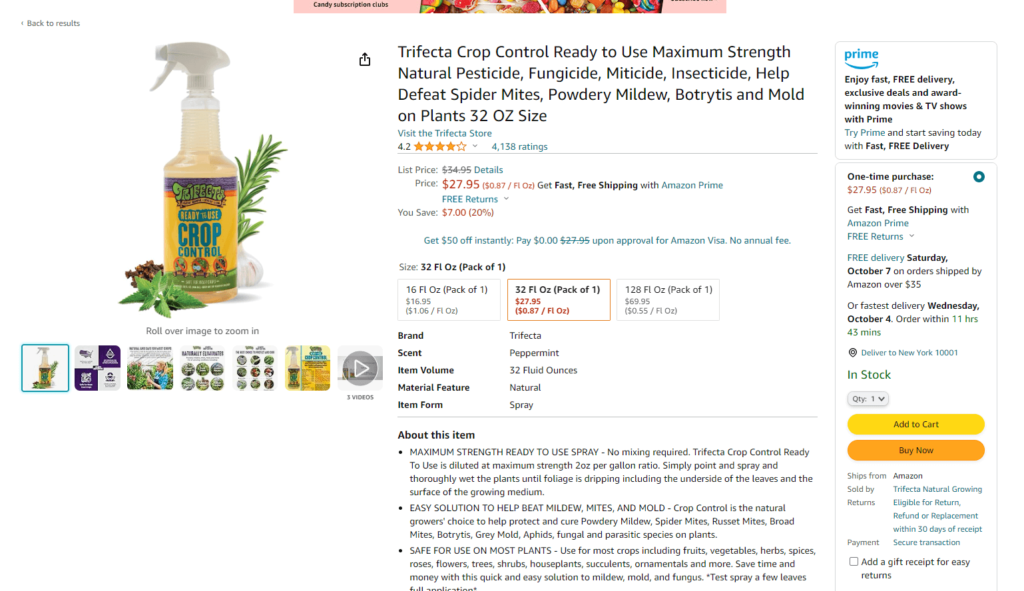
An Amazon-approved pesticide listing safe for general public use.
A product listing suggesting to be a pesticide may include the following terms in its content:
- “Prevents, blocks, removes, neutralizes, or controls bacteria or other pests.”
- “Sanitizes, disinfects, or sterilizes”
- “Resists mildew”
- “Removes or prevents mold.”
In addition to these common pesticide claims, the EPA identifies an extensive range of products as pesticides due to the specific terms used in describing the products.
Here are a few examples of such claims:
- A door knob claiming to resist bacteria
- Socks or shoes that claim antimicrobial properties
- A boat or automobile cover claiming to prevent mildew
- A mattress claiming to be antibacterial
- A dehumidifier claiming to prevent mold mechanically
- A pillowcase claiming to be resistant to dust mites
- A “mildew-resistant” shower curtain
What are “Permitted” & “Prohibited” listings of pesticides:
A Permitted Pesticide and Pest Control equipment listing must meet all registration and labeling requirements under FIFRA and all applicable state and municipal legislation. Suppose it’s selling in the United States. In that case, the listing must bear an active EPA registration number and an EPA establishment number on its labels unless it falls under one of the exemption categories. Equipment used to apply pesticides must carry the EPA registration number.
A Prohibited listing with a pesticide claim would include either one or more of the following:
- Unregistered/unapproved pesticide sellers
- Pesticide products and pesticide devices sold by non-U.S. residents
- Listings with pesticide claim without EPA information in the Pesticide Marking attribute
- Pesticide devices manufactured in a location or facility other than an EPA-registered establishment lack a visible EPA establishment number on the label or make false or misleading claims.
- Restricted use of pesticides, which are not available for purchase or use by the general public
- Products labeled for professional use only
- Pesticide products that make false or misleading claims or are otherwise misbranded (for example, claims regarding the safety of the pesticide or its ingredients, such as “safe,” “non-poisonous,” “non-injurious,” “harmless,” “non-toxic,” or “all-natural”)
- Amazon strictly regulates pesticides that make health claims (e.g., products marketed to prevent or treat disease, infection, or pathological conditions).
- Brands of mosquito repellent bracelets and decals that Amazon did not authorize.
- Pesticide products in broken packaging or sold in a quantity or amount differ from what is listed on the label approved by the EPA.
- Pesticides intended for outdoor use on plants, crops, turfs, foliage, seeds, home yards and gardens, as soil treatments, or for similar purposes that contain neonicotinoid insecticide chemicals, including but not limited to Acetamiprid, Clothianidin, Dinotefuran, Imidacloprid, Nitenpyram, Nithiazine, Thiacloprid, and Thiamethoxam. These pesticides are classified as Restricted or Limited and prohibited from sale on Amazon.com.
Tips For Listing “Non-Pesticidal” Products on Amazon
If Amazon keeps wrongly blocking or removing your listing, imposing a pesticide claim on your listing, these tips are for you:
1. Avoid using terms like ‘antimicrobial’ for ‘antibacterial’ products.
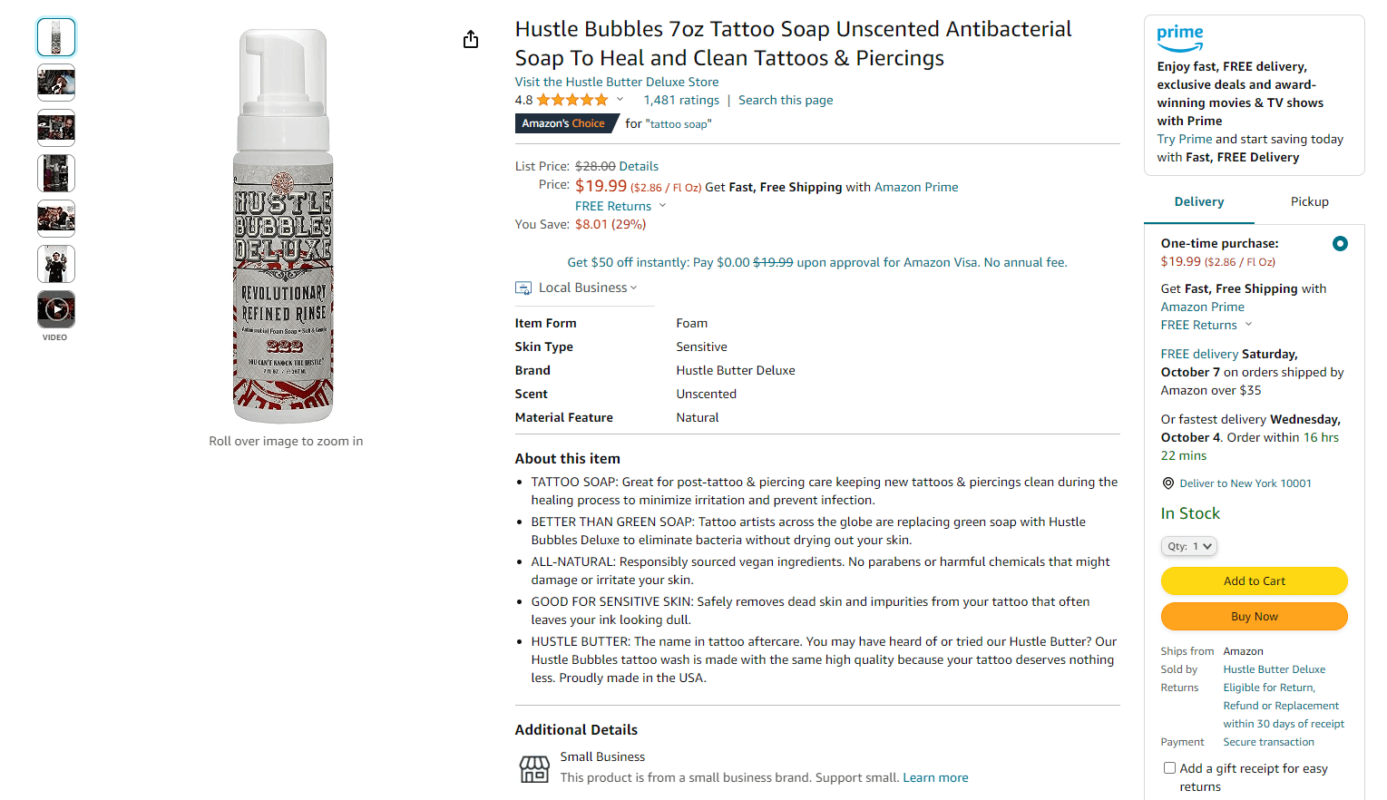
An example of a non-pesticidal listing offering an antibacterial formula for sterilizing tattoos and piercings.
If your product protects against germs and bacteria (soaps, sanitizers, cleaning products), use terms like ‘antibacterial’ or ‘fight against bacteria.’ The word ‘antimicrobial’ is a broad term that includes protection against fungi, parasites, algae, dust mites, and certain viruses, and so it is used to describe pesticide features.
Including antimicrobials for your antibacterial products will trigger Amazon’s scanning algorithm, which will most likely flag your listing, assuming it to be a pesticide claim or a pest device/equipment.
2. Avoid adding ‘prevent, kill, or destroy pests’ to your listing
To use such terms, you must first register your product with the Environmental Protection Agency (EPA). It’s a time-consuming scientific, legal, and administrative process that requires a detailed examination of the product’s contents, the specific site or crop for which it’s intended, and the recommended dosage, application window, and storage conditions. You’ll need to submit your product for a battery of risk assessments that look at factors like the product’s potential to cause harm to different species and the risk it poses to water supplies (both surface and ground).
Here are some terms to avoid if your product is not pesticidal:

3. Avoid using pest images on your label and terminology
Including pest images, names of insects, or anything that suggests your listing to pest control products will confuse Amazon, resulting in Amazon removing or blocking your listing on the platform. Since Amazon’s pesticide bot is not exactly flawless, it tends to make such errors.
4. Monitor Your Inventory Regularly for Pesticide Review
Keep an eye on your managed stock frequently to catch and remedy any errors in labeling. You may not be informed if a product is put on hold for pesticide evaluation. If your product is flagged for review, Amazon Associates can help you figure out what went wrong so that it can go back on sale.
To check if your products are under pesticide review, go to ‘Manage Inventory’ > Select Inactive Listings.

If any of your listings are under pesticide review, they should appear under inactive listings on Manage Inventory.
How To List Your Pesticide Products on Amazon Properly:
The platform has established specific guidelines to prevent the distribution of illegal pesticides. One such measure requires all merchants selling pesticides on the marketplace to complete an online learning session on federal pesticide laws. The sellers take the final assessment at the session’s conclusion; sellers are expected to score above 80% to pass the session.
If you type “required training for selling pesticides” into the main search bar of Amazon Seller Central, you’ll find the results for the course at Seller University.

Before selling pesticides on Amazon’s U.S. marketplace, sellers must undergo proper training. There is only a single attempt required to pass this class. After finishing the course, you must supply EPA details for relevant listings.
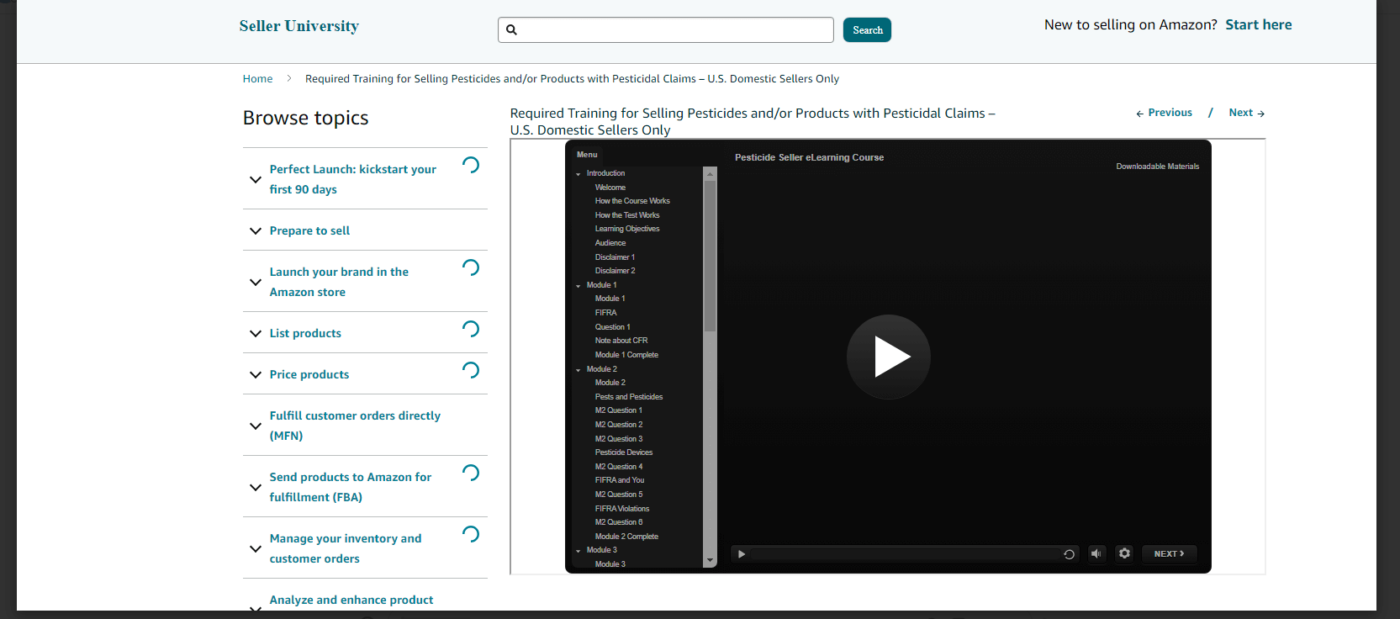
Steps For Getting Approval From Amazon:
Step#1: Log in to your Amazon Seller Central.
Step#2: Go to Catalogue > Click on Add a Product.
Step#3: Search for the ASIN you wish to sell.
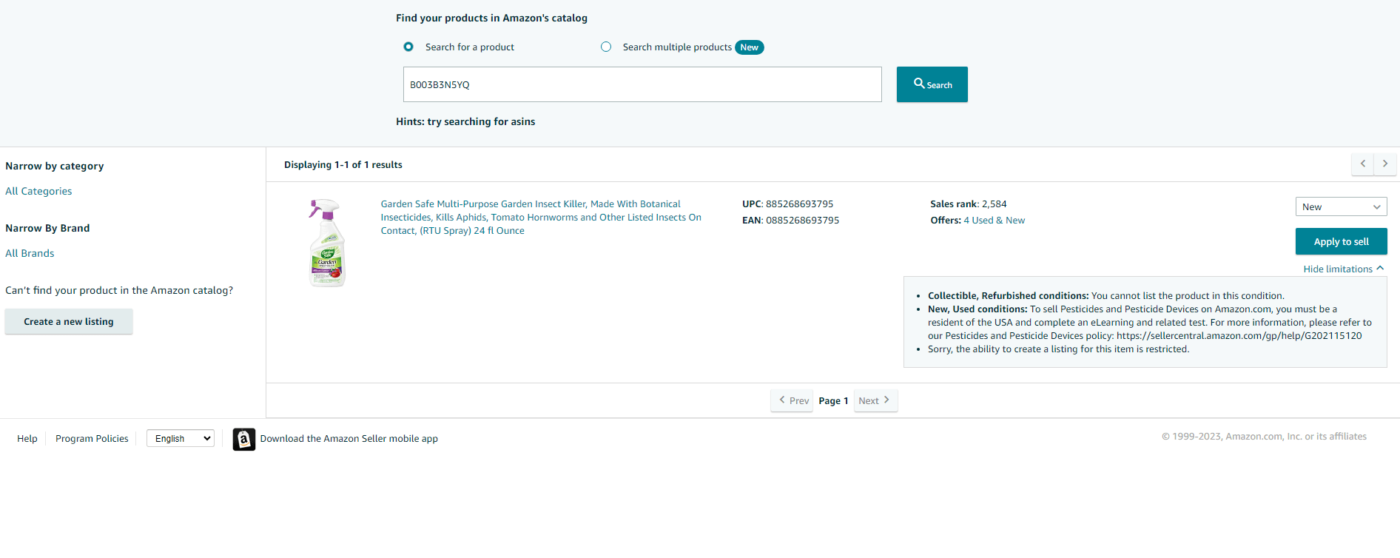
Step#4: Select the Listing restrictions apply link near the ASIN in the search results.
Step#5: Click on ‘Request approval’ to initiate your application.

Step#6: Complete the above training course with an 80% or higher score.
Step#7: Click Continue from the Course Results page, and Exit.
Step#8: Once redirected to the application workflow, check the box to agree to the Guaranty and click Submit.
Amazon could turn down your application. To keep a check on your application’s progress, follow these instructions to verify the product types in which you are permitted to engage in sales if you are concerned about the status of your application.
Go to ‘Menu’ on your Amazon Seller Central > Hover on ‘Catalogue’ > Click ‘View Selling Application’.

Remember To Add EPA Information To Your Listing!
Sellers must include a Pesticide Marking attribute in their listings for any goods with a pesticide claim or pest control equipment or including any pesticidal features.
Evidence of an EPA registration and EPA establishment number or certification that the product is exempt from EPA restrictions is required for listings of pesticide products and equipment. Each pesticide claim or pest control device listing must include an EPA registration number or EPA establishment number, as appropriate, or state that the product is exempt from registration.
The Compliance ID attribute – Pesticide Marking page provides in-depth guidance on adequately including the Pesticide Marking element when creating or editing listings for pesticides or pesticide devices.
Don’t Let Amazon’s Pesticide Bots Flag Your Listing!
Before you start selling pesticides on Amazon, you should review your listings for the banned terms we mentioned above. It will protect everything in your catalog from being taken down by the pesticide bots.
We realize how frustrating it can get when your product gets flagged by the pesticide bot for the wrong reasons. Hopefully, the tips mentioned in our blog will help you secure your listings from Amazon’s wrongful suspension or removal. For further information about recovering your listings, contact our Amazon experts at AMZDUDES immediately!

